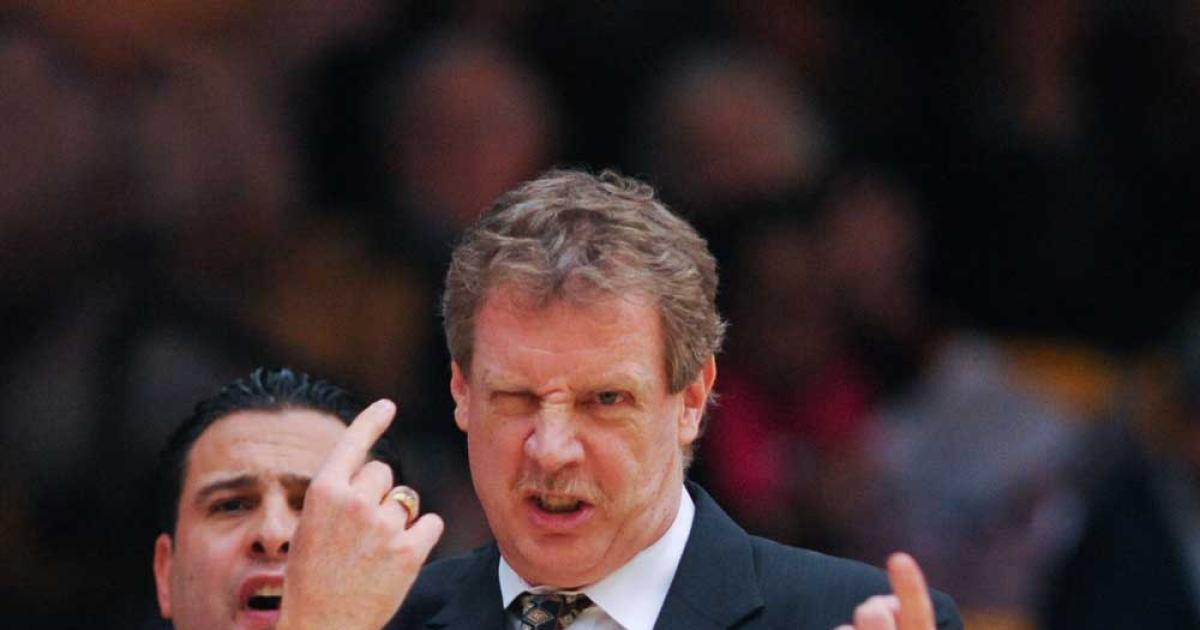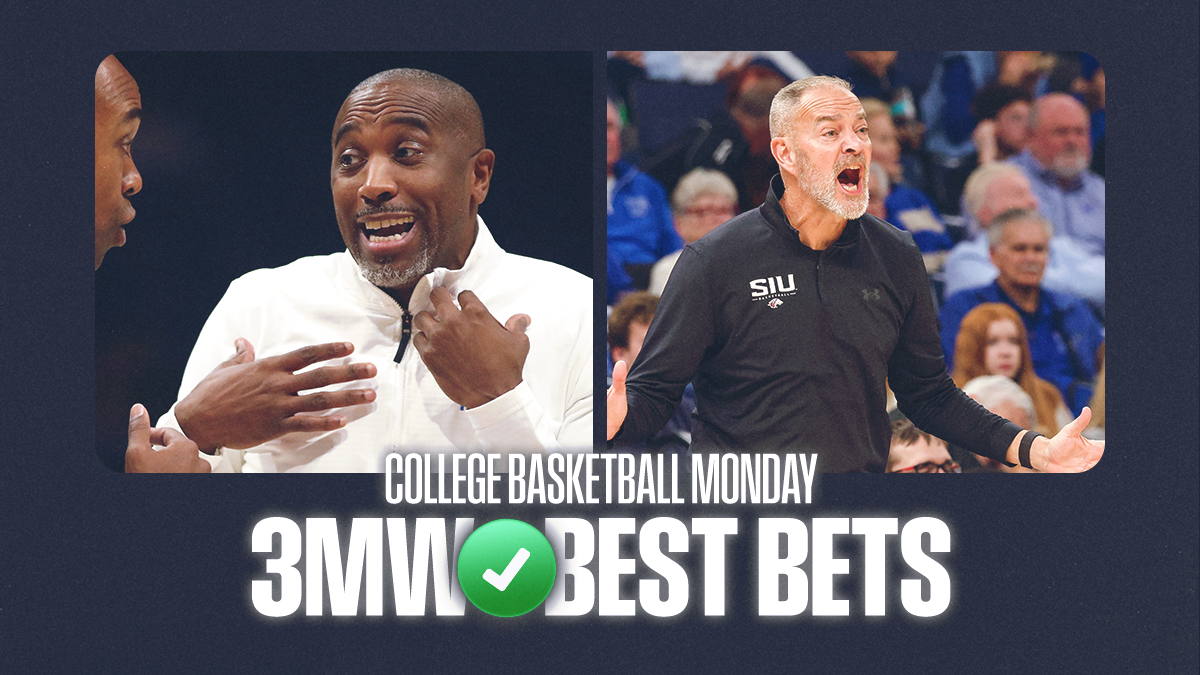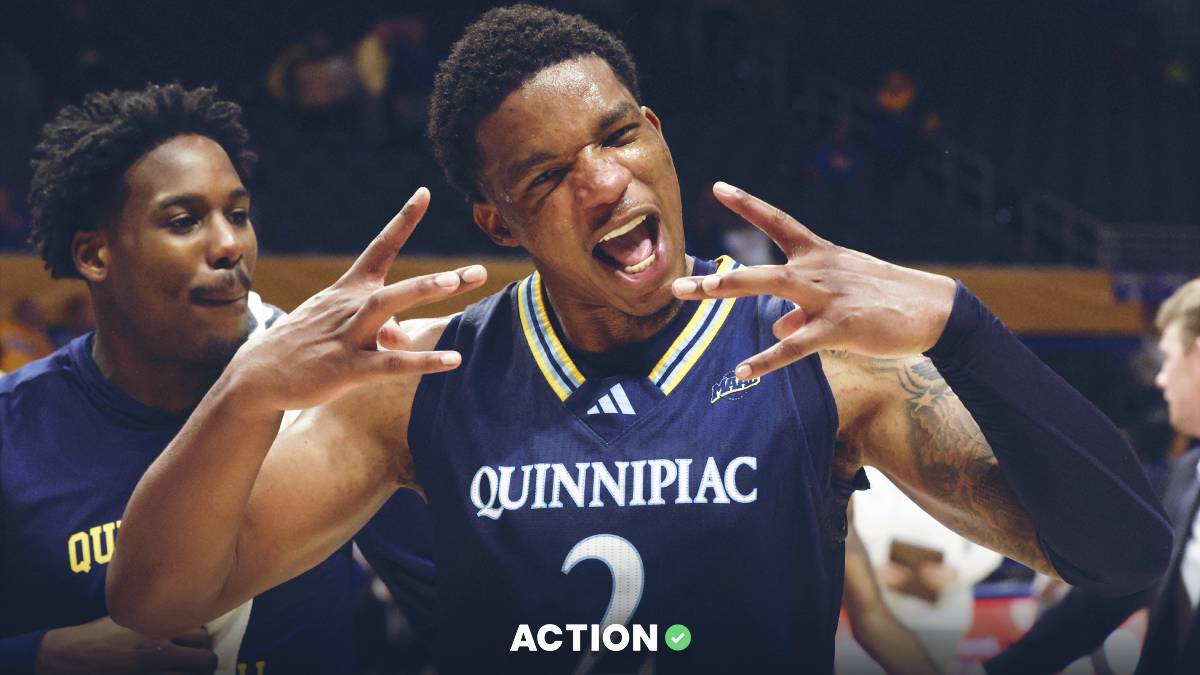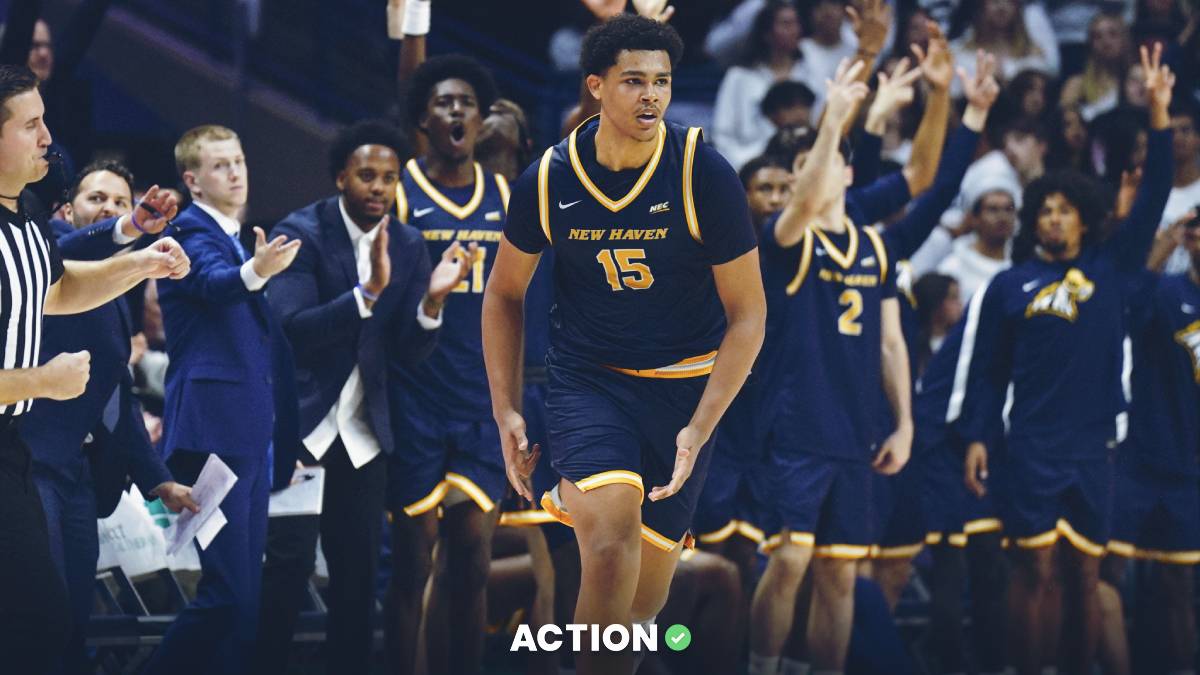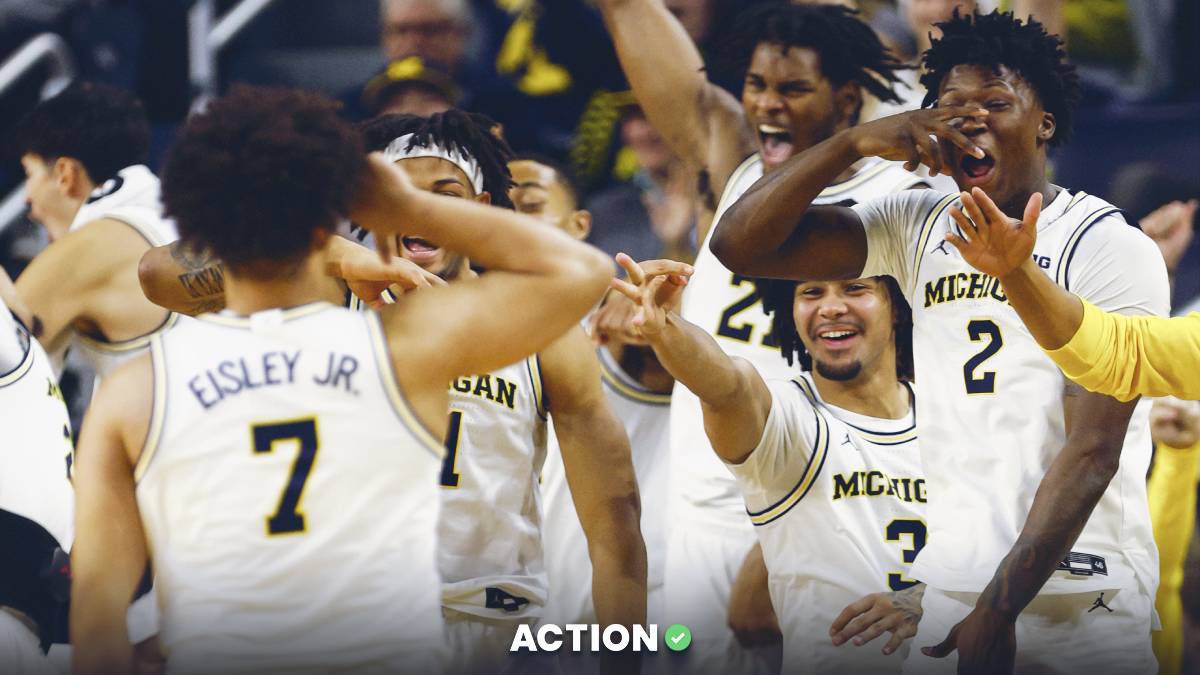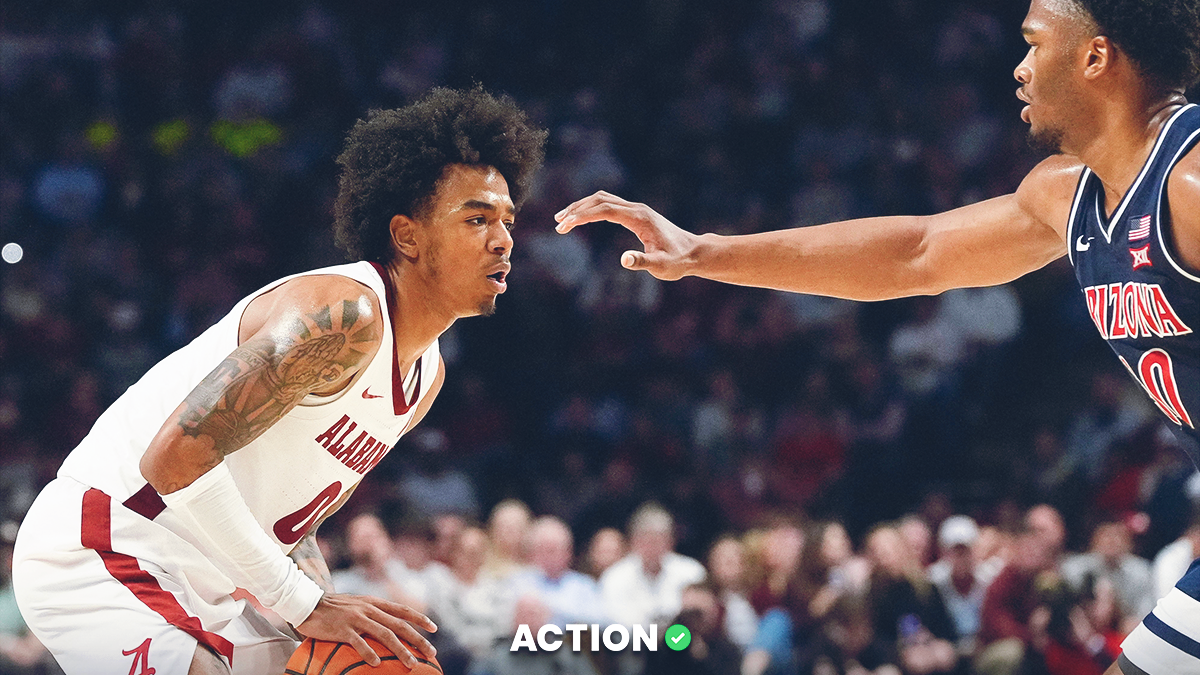1. Tim Cluess doesn't rebuild, he reloads, and Iona is going for the first MAAC three peat since Siena did it from 2008-10.
2. After a year derailed by injuries and Masiello millennial rants, Manhattan look like they should be back to being one of the MAAC's top teams.
3. Mid-major darlings Monmouth probably missed their window after dominating the MAAC regular season for two years. Justin Robinson and Je'lon Hornbeak are gone, but King Rice has proven to be an outstanding developer of talent.
4. Sydney Johnson took international recruiting to the extreme, restocking Fairfield with outstanding talent from Lithuania, Egypt, Kuwait, Tunisia, Sweden and Puerto Rico.
PREDICTED ORDER OF FINISH:
1. Iona– The Gaels lose their top three scorers from last year's MAAC title team, but as is typical for Tim Cluess, he's simply reloaded, especially in backcourt/wing. Cluess has guided Iona to four titles in seven years in New Rochelle, and you would be hard pressed to find a more consistent offensive system in the entire country than Cluess' run and chuck offense, as the Gaels have led the MAAC in offensive efficiency in all seven of his seasons at the helm. At the center of Cluess' offense is a dedication to transition basketball, spreading the floor out with four guards around a highly-efficient big and letting it rip from 3. Last year the Gaels were a top-30 transition field goal attempt rate team and shot 40 percent from 3 (42 percent in league play) while attempting them at a top-100 rate (which was actually pretty low for a Cluess team). With Jordan Washington gone, the Gaels should be even more backcourt centric this year, as Washington posted unreal usage, shot and free throw rates, as well as being a dominant force on the glass. Rickey McGill leads the backcourt on the ball, and he's as good of a point guard as there is in mid-major basketball. He posted the MAAC's fifth-highest assist rate, 10th-highest free throw rate and fifth-highest steal rate heading up Cluess' defense that constantly shifts from different zones to full-court pressure to basic man. McGill will be surrounded by two mercurial guards in Schadrac Casimir and Deyshonee Much. Casimir is a deadly shooter (48 percent from 3 in MAAC play) and secondary ball handler when healthy, while Much is a devastating athlete in the MAAC at 6-foot-5 and can shut down opposing 2s and 3s on the defensive end. Much had some what we'll call focus issues last year, but when he was locked in toward the end of the year, he was arguably the MAAC's best pound-for-pound player and was an integral part in Iona's MAAC tournament run. Adding depth to the backcourt is Zach Lewis, who returns to the MAAC after a trip to Amherst. Lewis started his D1 career at Canisius, transferred to UMass and is now suiting up for Iona as a grad transfer. Lewis is a plus defender who can score in bunches in Cluess' system, but will only need to chip in a few buckets a night most likely. Freshman point guard C.J. Seaforth is the future of Iona basketball, but he'll simply be outstanding depth in a loaded backcourt this year. The wing corps is nearly as solid as the backcourt, with Illinois State transfer Roland Griffin joining E.J. Crawford. Crawford is the offensive threat, posting a 120 ORtg in MAAC play while hitting 50 percent of his 3-pointers. Griffin is an outstanding defender with length that can guard 2-4. Freshman Gavin Kensmil will also be contributing at the 3/4 this year. Replacing Washington in the frontcourt likely isn't possible, and the problem is compounded with the loss of solid interior defended Taylor Bessick. Tulsa transfer TK Edogi is a plus glass eater and capable defender but is simply just a fraction of the offensive threat Washington was. Tyrell Williams returns as an enforcer of sorts in the paint, while Jan Svandrlik is a floor stretcher in his limited minutes. Interior play on both ends and rebounding will be significant issues for the Gaels, but Cluess' backcourt/wing stable is just too talented and too deep for the rest of the MAAC.
2. Manhattan– The preseason injury to Rich Williams essentially had a domino effect on the Jaspers last year. Not only did Steve Masiello lose his best player, but it forced nearly everyone else to play out of position, and injuries elsewhere hurt his depth, which in turn hindered his ability to utilize his typical high-pressure zone to full effect. With Williams back as one of the best wings in the league, Manhattan's abysmal offense should be much improved. Indeed, improving from a league-worst 0.97 points per possession is a low bar, but Williams should buoy the Jaspers to middle of the pack status at the very least with his ability to score at all three levels. Masiello's addition of two legit bigs in Pauly Paulicap and Warren Williams will allow Zane Waterman and Calvin Crawford to move to more natural positions. Paulicap provides rim protection and rebounding on the back end of the zone press, while Williams is block scorer. Their collective presence will allow Waterman to float out to the perimeter more at the 4 and allow Crawford to wreak havoc on the perimeter on both ends with his athleticism at 6-foot-8. Samson Usilo and Ak Ojo can provide depth in the frontcourt this year, which is where they're best suited. In the backcourt, Zavier Turner and Aaron Walker return as dual ball handlers, but I expect Walker to slowly take over the reigns as the primary ball handler, as it allows Masiello to move Turner more off the ball, where he's the Jaspers' best perimeter shooter. Freshman Bud Mack can also handle point duties when necessary off Masiello's deep bench. Tom Capuano is a spot shooter who should return to a more reserve role. Freshmen Pat Strzala and Edwin Ebube provide depth on the wing, with Ebube being more of a defensive threat with his athleticism in Masiello's scheme, while Strzala can provide some much-needed shooting off the bench. An excessively high foul rate is always going to plague Masiello's teams. That's just the nature of the scheme. But in the past his teams have been skilled enough offensively and force enough turnovers defensively to overcome it. That wasn't the case last year, but with Williams healthy and far more serviceable depth allowing everyone to play their natural positions, the Jaspers should be back as a MAAC title contender.
3. Niagara– I'm buying the Purple Eagles this year, especially if Chris Casey can stumble on an effective defense (Niagara was all over the map from man to man, to full-court pressure, to zone). With all five starters back (a minor miracle considering the insane transfer rate Casey has seen during his tenure) from a team that was competitive with the MAAC elite last year, Niagara could be poised for a breakthrough year. Kahlil Dukes headlines the backcourt after posting the MAAC's third-highest assist rate while also hitting 43 percent of his triples, and when he gets to the free throw line, he essentially doesn't miss, hitting at 91 percent from the charity stripe. The depth around him is solid, as Chris Barton returns as a lethal spot shooter in Casey's spread pick-and-roll offense and drag screen transition action. James Towns and Dwayne Pow (if healthy) provide steady secondary ball handling, while Kevin Larkin is probably Casey's best on ball defender at 6-foot-5. 6-foot freshman Dom Fragala might end up as Casey's preferred off-ball option, as he's a devastating pure scorer with a lethal jump shot. The heart of Casey's pick-and-roll offense is wing Matt Scott, who can do everything on the floor, leading the team in scoring and rebounding while also posting a high assist rate for someone who takes as many shots as he does. Eastern Kentucky transfer Greg King can play the 3 and 4, adding versatility to the solid frontcourt of Marvin Prochet and Dominic Robb. Prochet is the offensive threat of the two, as he nearly doubled his 3-point attempts from his freshman year, while Robb is the defensive anchor, posting the league's third-highest block rate. The Purple Eagles were one of the better defensive teams in the MAAC in terms of guarding in the paint, but the propensity to block shots took a toll on the defensive rebounding. Freshman Kierell Green could help in that regard in bigger lineups. This is Casey's open window for his Niagara team with the league's best senior tandem. Can the Purple Eagles capitalize?
4. Monmouth– The Hawks have been the class of the MAAC regular season the last two years and of course became "America's Mid-major" with the antics of the Bench Mob, but they've been shut out of the NCAA Tournament in that time. Now King Rice has to replace the irreplaceable Justin Robinson, the engine and heart and soul of his up-tempo transition attack. And Robinson isn't the only guy graduating, either. So this will be probably be the year Monmouth wins the MAAC tournament, right? Rice will rely on Micah Seaborn to take over as the lead dog in a system built on pushing relentlessly off the defensive glass in transition. Only crazy Savannah State attempted more FG attempts in transition after a defensive rebound (per hoop-math.com, and a stat I've referenced religiously over King Rice's tenure in West Long Branch) than Monmouth, and the Hawks were third overall nationally in FG attempt rate in transition. Seaborn will likely be on the ball for Rice along with Austin Tilghman, but both have to step up their defensive games, as Robinson and Je'lon Hornbeak spearheaded Rice's pressing zone trap schemes. Ray Salnave is going to be relied upon in the backcourt on both ends, and he had a redshirt year to gain Rice's confidence. Former Bench Mob actor Louie Pillari made good in a breakout performance against Niagara in the MAAC tournament and could have an expanded role for Rice as a destitute man's Collin Stewart. Pierre Sarr's 6-foot-8 length will be used on the wing as a defensive wreaking ball, and while his offensive game is still a major work in progress, he has the most talent of the 3/4 options. Freshman Marcus McClary is a quintessential Rice recruit, perfect for his transition offense on the wing. The frontcourt loses the criminally underrated Chris Brady, and Zac Tillman, Diago Quinn, Mustapha Traore and Sam Ibiezugbe aren't inspiring options, which means the defensive rebounding and interior defense, both keys to Monmouth's transition attack going the other way, will likely take a hit. King Rice tends to get the most out of his players and maximizes their skill sets by playing them in the right spots and not yanking them after mistakes. He'll need even more patience with this team, but they should round into form come MAAC play.
5. Fairfield– The Stags are an intriguing sleeper in the MAAC, as Sydney Johnson has been recruiting to his newfound commitment to running after basically abandoning the Princeton offense for which he was synonymous in MAAC and Ivy circles. With a deep and talented recruiting class (from literally all over the world), Fairfield should return to playing at over 70 possessions per game, maybe even well over if Johnson continues to utilize a zone press scheme. The recruiting class is nice, but the key to the Stags' season is of course POY candidate Tyler Nelson, a lethal three-level volume scorer out of the backcourt. Senior Jerome Segura also returns as an often inefficient dual point guard, but he's the key to any pressure scheme Johnson throws out. The wing corps will rely on two newcomers in freshman Jesus Cruz and JUCO transfer Ferron Flavors to replace the scoring of Jerry Johnson Jr. and Curtis Cobb. Freshmen Wassef Methnani and Omar El-Sheikh are perfect frontcourt additions for Johnson, as both are stretch bigs and point forwards of sorts. They'll join veterans Jonathan Kasibabu and Matija Milin. Kasibabu is the "traditional" big, while Milin is another stretch 4 option. Johnson has a ton of depth at his disposal (I haven't even mentioned freshman wing Kevin Senghore-Peterson yet), and I expect the pressure and pace to pick up, especially with Kasibabu, one of the league's best rim protectors and rebounders cleaning things up on the back end.
6. Saint Peter's– It's likely a rebuild year for John Dunne, one of my favorite defensive coaches in the country. The Peacocks lose a ton inside and out from last year's CIT title team, and offense was always a struggle even for Dunne's best teams. In fact, last season was Dunne's best offensive team at St. Peter's, and they finished 210th nationally in terms of offensive efficiency. A dip back into the 300s seems likely this year, and the defense will likely struggle to initially pick up Dunne's souped up ball-line approach that denies penetration, easy entry passes and basically all action through the paint. Traditionally, you have to hit jump shots to beat Dunne's Peacocks. With all the personnel losses, Dunne will rely on a slew of JUCOs and freshmen around key returnees Nick Griffin, Sam Idowu and Nnamdi Enechionyia. Enechionyia will be the focal point this year, as he's one of the most underrated players in the league. Offensively he can stretch defenses, and on the other end he can guard 2-4. Griffin probably leads the team in scoring, but he has to expand his game beyond accurate spot shooting. Idowu should take over for Quadir Welton, and he probably needed to have more offense run through him after posting a 120 ORtg in MAAC play, thanks to 48 percent shooting from 3. He and Enechionyia can certainly create some mismatches on the offensive end. The backcourt is a bit of a jumble beside Griffin. Jeremiah Livingston, Eli Gonzales and Davauhnte Turner could all see minutes on the ball, although Turner is more of a scoring option than distributor. Freshman wing Manny Dixon should also provide some offensive punch. Dunne's defense is generally as reliable as Tim Cluess' offense, but the heavy personnel losses have me concerned about an already concerning offense.
7. Siena– It was a weird, frustrating and ultimately disappointing year for Siena, as one of the country's oldest teams stumbled out of the gate only to recover and lose a MAAC title game thriller to Iona on their home floor. This year Jimmy Patsos loses all those seniors, but as I documented last year, there was a lot of locker room derision, with Patsos' style reportedly at the center of the storm. With the bizarre team chemistry from last year no longer an issue, this team should, in theory, be more cohesive while also being much younger. This version of the Saints is much more backcourt/wing oriented, and I'm curious to see if Patsos will continue to utilize his modified flex offense as much. Given that the last time a Patsos team shot the 3 at a significantly high rate was a decade ago, I'm thinking the flex schemes probably stay. That said, 6-foot-5 mercurial wing Nico Clareth is Patsos' go-to scorer, and he'll be joined by 6-foot-4 breakout candidate Ahsante Shivers (although he's entering the year banged up already). The point guard position is a bit of question mark, with veteran Khalil Richard the "incumbent," but freshman Roman Penn will likely be running the offense sooner rather than later. Penn was with the team last year at practice for the second half of the season, so he knows Patsos' scheme. Veteran Kadeem Smithen should see time on the ball as well. In the frontcourt, Patsos is very young. Evan Fisher and Sammy Friday return as veterans, but the bulk of the minutes should be shouldered by highly-touted freshman Prince Oduro. Patsos also says Fairfield transfer Kevin Degnan is in the best shape of his career and ready to be a starter at the 4, but I'm a bit skeptical about how much he can actually contribute in the flex offense. I expect Patsos to run his typical extended zone designed to keep teams off the 3-point line (so the Saints do shoot 3-pointers and they don't allow 3-pointers), especially with this inexperienced frontcourt. Patsos' reliance on offensive rebounding and a compact offense also makes the Saints extremely vulnerable in transition defense, and in a fast league like the MAAC, that has been routinely exploited by the likes of Monmouth and Canisius. (And the Saints allowed the 19th-highest FG attempt rate at the rim.) Clareth is an electric scorer, among the league's best, but there are too many holes to fill for Siena to be an upper-tier team this year, although the locker room might actually be a little more cohesive, even with all the new faces.
8. Canisius– You have to consider Reggie Witherspoon's first year back in Buffalo to be a success, as the Griffs finished 10-10 with a postseason appearance to boot. The offense was typical Witherspoon – spreading the floor in transition with shooters and finding the open man quickly. The Griffs were fifth nationally in assist rate and hit the 3 at 37 percent as a team. Canisius lost a lot of offense from last season, but Jermaine Crumpton returns to the wing and could lead the MAAC in scoring as a legit three-level scorer, while Isaiah Reese and Malik Johnson form a potent dual point guard attack in the backcourt. The 6-foot-5 Reese is also one of the league's best ball hawks, registering the MAAC's second-highest steal rate. While the perimeter defense is solid, the interior defense is among the worst in the country. The Griffs were dead last in eFG% and 2PT% defense in MAAC play and had the league's lowest block rate. Witherspoon loves to invert his size offensively, but he pays the price on the defensive end as evidenced by a player like 6-foot-7 Spencer Foley, who should have a breakout year offensively on the perimeter but can't guard at the 3. A trio of newcomers should make Witherspoon's offense even more potent, as 6-foot-4 Georgia Southern transfer Jonathan Sanks is a lethal shooter on the wing, 6-foot freshman D.J. Heath is perhaps the best recruit in Canisius history, and 6-foot-5 freshman Takal Molson is another perfect wing fit and provides some athleticism and slashing ability to the stable of shooters. The Golden Griff offense will be highly efficient again, but there doesn't appear to be a remedy on hand for a softer than soft interior defense, and that will once again hold Canisius back.
9. Rider– Kevin Baggett pulled a Sydney Johnson last year, dramatically upping the Broncs' tempo from 329th (65 possessions on average) to 24th (72 possessions). With Stevie Jordan returning at the point as one of the league's best on-ball guards, I expect Baggett to maintain that emphasis on transition offense. Jordan led the league in assist rate as a freshman and posted the league's sixth-highest steal rate. He'll lose four key seniors from last year, but Baggett has reloaded with transfers. The backcourt will return Kealen Washington-Ives, a capable ball handler, and Anthony Durham, who should see a bump in minutes after hitting 39 percent of his 3-pointers. Demencio Vaughn returns from an ACL tear, and he's a large part of Baggett's pressure defense with his athleticism at 6-foot-5. Vaughn was well on his way to posting one of the league's highest steal rates before the injury (although he's currently suspended after an offseason incident). As a consequence of that pressure defense, the Broncs allow a ton of high percentage shots (11th highest FG attempt rate at the rim in the country), and Tyere Marshall will have to step up as the team's best returning rim protector on the back end. Maine transfer Devine Eke should play a key role defensively in the paint as well, as he's used to running the floor in Bob Walsh's scheme in Orono. Defensively, the Broncs are reliable no matter what the scheme by Baggett. Offensively, they tend to struggle under Baggett, and even with Jordan back, that's likely the case again this year unless freshmen Jordan Allen and Paxton Wilson provide a significant upgrade on the wing as shooters.
10. Marist– It's been a long, slow process for Mike Maker, and this year doesn't appear to provide much hope for Marist's first winning season since 2007-08. Maker has been making strides in implementing his Princeton offense, and the return of Brian Parker and Ryan Funk will help Marist continue to trend upward in that regard. Parker can be a volume scorer and penetrator on the ball (he also posted the league's highest free throw rate), while Funk is as good of a shooter as there is in the league as a 6-foot-5 wing. Maker also added Marshall transfer Aleks Dozic, who Maker thinks will be the point forward he's been missing in his Princeton scheme. The rest of the frontcourt consists of spot shooter Kristinn Palsson, undersized but athletic 4 Isaiah Lamb and Tobias Sjoberg, who was Maker's only rim protector last year. Sjoberg needs to improve his excessive foul rate in his sophomore year, but he did show some solid post moves in addition to being the team's sole interior defender. Speaking of defense, the Red Foxes were horrific in virtually every metric. Freshman wing Austin Williams could help in that regard as could a healthier Lamb (still a question mark). A dramatic improvement on the defensive end doesn't seem likely, and therefore, the Red Foxes are seemingly destined for another near cellar finish.
11. Quinnipiac– Baker Dunleavy comes to Quinnipiac with a fairly impressive pedigree. He's of course the son of Mike Dunleavy, and he spent six years as a top Jay Wright assistant. So that means we're likely to see the outstanding spacing and inventive ball screen action that has been synonymous with Villanova basketball the last few years. Unfortunately, Dunleavy couldn't convince Peter Kiss and Mikey Dixon to stick around through the transition, and the significant returnees number exactly two: Chaise Daniels and Abdulai Bundu. In a way, that might be for the better, as Tom Moore (Dunleavy's predecessor) played something of a smash mouth brand of basketball that relied heavily on offensive rebounding, perhaps more than any program in the country. Daniels and Bundu form a solid interior duo for Dunleavy to work with, especially defensively, while Alain Chigha is a veteran on the wing. Look for freshman Rich Kelly to take over at the point immediately, and he should have a steep learning curve with flashes of brilliance running Dunleavy's Villanova offense. He could end up posting some of the best freshman numbers in the league. Penn State transfer Isaiah Washington will probably lead the Bobcats in scoring playing off the ball alongside Kelly. Dunleavy was one of the more intriguing mid-major hires, and it will be interesting to see how quickly Quinnipiac picks up his system.
FINAL OUTLOOK: Iona is once again the team to beat, but a rejuvenated Manhattan lurks to rekindle one of the league's best rivalries. Monmouth and Niagara could also contend for postseason berths.
MAAC PLAYER OF THE YEAR: Tyler Nelson, Fairfield
ALL MAAC FIRST TEAM:
Tyler Nelson, Fairfield
Matt Scott, Niagara
Micah Seaborn, Monmouth
Rickey McGill, Iona
Jermaine Crumpton, Canisius
ALL MAAC SECOND TEAM:
Rich Williams, Manhattan
Nico Clareth, Siena
EJ Crawford, Iona
Deyshonee Much, Iona
Khalil Dukes, Niagara
Be part of the Action
Download the Sports Action app at the App Store or Google Play


